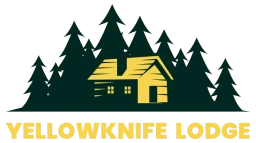About Yellowknife, NT
Yellowknife (Est. 1934) serves as both the capital city of the Northwest Territories and its sole city. The Northwest Territories are situated in Canada’s northwestern region. Archaeological evidence suggests human presence in the area dates back to approximately 2000 BCE. The Dene and Inuit peoples are the two predominant Indigenous groups with the longest historical connection to the region.
Yellowknife's development accelerated in the early 20th century following the discovery of gold in 1898. This discovery attracted a significant influx of prospectors, miners, and traders seeking economic opportunities. The city derives its name from the Yellowknife River, which in turn was named after the Dene people’s copper knives.
The establishment of a trading post, hospital, and school contributed to early growth. The city’s first newspaper, The Yellowknife Blade, began publication in 1936. During World War II, Yellowknife served as a strategic supply depot and airbase during the construction of the Alaska Highway.
The 1950s and 1960s marked a period of further expansion, with the establishment of municipal government and the construction of a university. This growth was driven by a flourishing mining industry, further stimulated by the discovery of diamonds, gold, and other minerals.
The Dene and Inuit peoples made significant contributions as guides, trappers, and traders, and enriched the community by sharing their cultural heritage of music, dance, and art.
The 1970s and 1980s brought significant social and economic changes as the Northwest Territories achieved self-government. The signing of the Dene-Métis Land Claim Agreement recognized the rights of the Dene and Métis peoples to their traditional lands and facilitated the creation of numerous Indigenous-owned businesses and organizations.
Yellowknife now has a population of approximately 20,000 people, with a vibrant arts scene and museums showcasing the work of many local artists. Numerous events and festivals, such as the Yellowknife Music Festival and the Great Northern Arts Festival, provide residents and visitors with cultural activities throughout the year.
The Yellowknife region is rich with abundant natural beauty and wildlife, and is renowned for the spectacular displays of the Aurora Borealis (Northern Lights). For an enhanced experience and in-depth knowledge of this natural phenomenon, consider a guided tour with one of Yellowknife’s local tour operators.
Yellowknife’s downtown area features a variety of shops, restaurants, cafés, and a local farmers’ market offering fresh produce, handcrafted items, and collectibles.
Located a short drive from the city, Cameron Falls provides stunning views and landscapes for hikers, tourists, and artists. The Yellowknife River Territorial Park offers hiking trails and opportunities for canoeing and fishing.
The area offers diverse fishing opportunities, with several species commonly found, including:
- Northern Pike – Popular among anglers who enjoy an aggressive reeling experience with a challenging catch.
- Lake Trout – Found in deeper lake waters in the region, lake trout are a tasty and active catch.
- Arctic Grayling – If you enjoy seeing a fish out of water, the acrobatics of graylings are a sight to see. You will find these beautifully colored fish in local rivers and streams.
- Walleye – Another favorite among anglers, known for their excellent flavor, are found primarily in shallow, vegetated waters where they can lay in wait for their prey.
- Burbot – A freshwater cod that’s caught very often in winter months while ice fishing, offering braver fishermen. These fish are a solid catch for those who enjoy setting up an ice shack and a wood stove and doing some serious cold weather fishing.
The pristine lakes and rivers of the Yellowknife area offer excellent recreational fishing opportunities and scenic views.



